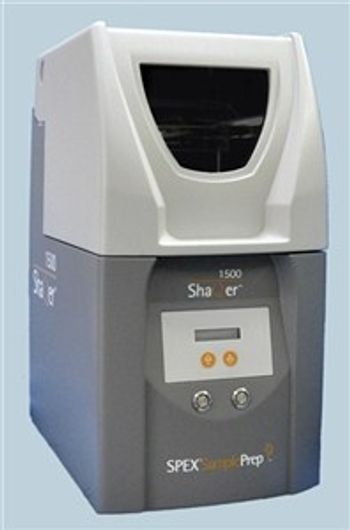
Homogenization seeks to create samples in which analytes of interest are dispersed uniformly throughout. Numerous technologies can achieve this, including pressure, mechanical (rotorstator or blade-type), and bead-beating. “Depending on the application, one approach may be more appropriate than others,” notes Holly Yacko Archibald, sales director at PRO Scientific (Oxford, CT). PRO Scientific specializes in blade and rotor-stator models that comprise 95 percent of the homogenizers they sell.
Mechanical homogenization is based principally on mechanical shear and the disruption of structures that include tissues from plants, animals, or humans. This mechanical breakdown is assisted to some degree by cavitational forces. Regardless, the operational variables for mechanical homogenization are time, rotor speed, and rotor type.
Ultrasonic homogenizers rely exclusively on cavitation, a phenomenon that has drawn a lot of attention for chemical synthesis. Cavitation involves sound waves traveling through fluids (typically water) that create microscopic bubbles that expand and then collapse violently, attacking and disrupting nearby cells and structures.
Misconceptions
Laboratory workers tend to use equipment they are either familiar with or have read about in the literature. This has led to numerous fallacies about mechanical homogenization.
Mechanical homogenizers have the reputation for breaking samples down to nanometer-sized particles, and this is certainly true for long, high-speed runs. But as Ms. Archibald notes, breakdown into almost any particle size domain is possible. “It’s possible to gently mix samples by running for a few seconds at low speed, which will provide a broader particle size bandwidth.”
Another misconception involves the alleged inability to process very small sample sizes, an important consideration as samples become more valuable. Mechanical probes have no problem processing samples even in 0.5 mL tubes, assures Ms. Archibald.
Since mechanical homogenizers resemble kitchen blenders in many ways, some cost-conscious lab managers assume that a $12 appliance will perform as well as a homogenizer. While that may be true for some easily processed samples for which precision and reproducibility are nonissues, dedicated homogenizers hold several trumps over simple blenders.
Mechanical homogenizers use precision- crafted stainless steel rotors and probes that are easy to clean, chemically resistant, and autoclavable. “And their results are reproducible,” Ms. Archibald adds.
PRO Scientific has recently introduced the DSP-20, which incorporates both ultrasonic and mechanical homogenization modes and full automation homogenization for up to 20 samples.
The main advantage of dual-mode homogenization is the ability to reach submicron particle sizes rapidly and reproducibly while mitigating somewhat the drawbacks of both modes. Mechanical and ultrasonic homogenization occur sequentially: First, mechanical disruption handles the larger-sized particles, then the ultrasonic probe turns on to complete the process. Alternatively, users may use either mode alone.
Since ultrasound tends to heat samples through cavitational effects, the technique is not always suitable for heat-sensitive samples. Dual-mode homogenization minimizes sample contact with ultrasound to a minimum, thereby sparing labile analytes from long exposure to ultrasound.
So far, dual-mode homogenization has received attention from a wide range of end users, according to Ms. Archibald, including those involved with food testing, wastewater treatment, and plant pathology.
Read more at Lab Manager Magazine
View our Homogenizers category on LabWrench
